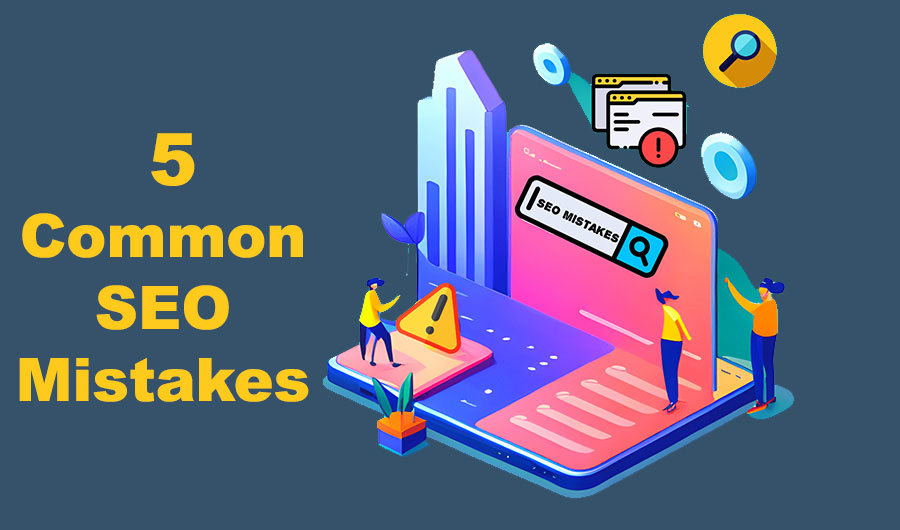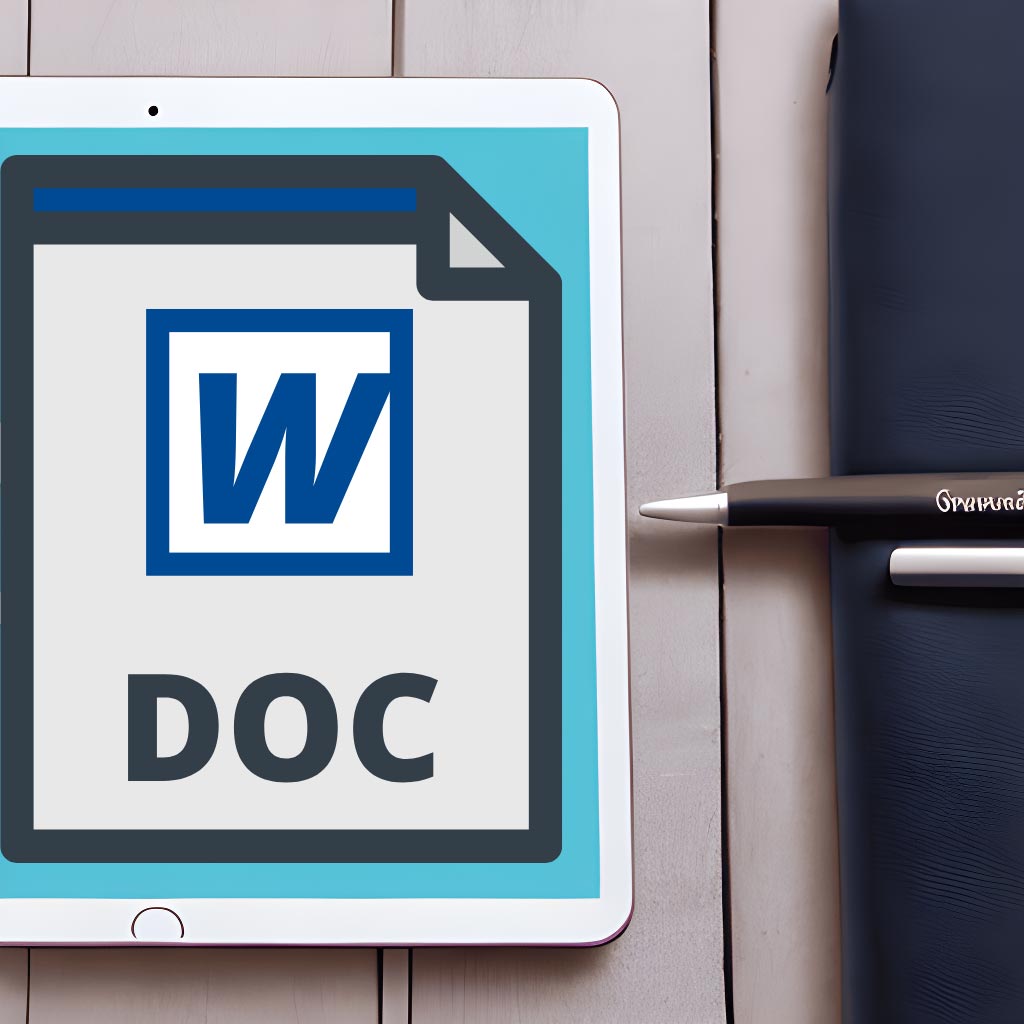
Optimize SEO By Avoiding 5 Common Mistakes
Find out most 5 common SEO mistakes in 2023
Search Engine Optimization, or so-called ” SEO ” isn’t merely a button-pushing game; envision it as a vast puzzle where each tiny piece must snugly fit. Just as with puzzles, there are typical blunders that can throw the whole picture off. Let’s dive into 5 common SEO mistakes missteps and how the ways you can dodge them.
Mistake 1: Ignoring Long-Tail Keywords
The following are the mistakes and solutions for ignoring long tail keywords:
What are Long-Tail Keywords?
Long-tail keywords are typically specific phrases that contain three to four words, or even more. Imagine you’re selling something, be it a gadget, a service, or just some cool info. Now, there are specific words and phrases that are super connected to what you’re offering. That’s where ‘long-tail’ comes in. Picture a long dragon’s tail; these specific words and phrases are like the tip of that tail. It means not a lot of people are searching for them compared to the broader, generic terms, but they’re super important for folks like us in the know. Cool, right?

These keywords often convey a searcher’s intent more precisely. For example, a keyword like “shoes” is very generic and the intent behind it is unclear. However, “Ladies black and white running shoes size 7” is a term refers to a long-tail keyword term where a user’s intent is much visible and clear.
Why Ignoring Long-Tail Keywords is a Mistake
It’s easy to gravitate towards shorter, broader keywords because they often have higher search volumes. However, these keywords also have higher competition, making it more challenging to rank well for them. On the contrary, while long-tail keywords may have lower search volumes, they are often less competitive and can yield better results in terms of attracting more targeted traffic.
Long-tail keywords can be highly valuable as they often draw in visitors who are further along in the buying cycle, hence more likely to convert. If you’re not using long-tail keywords in your SEO strategy, you might be missing out on these valuable conversion opportunities.
How to Incorporate Long-Tail Keywords
Weaving long-tail keywords into your SEO plan demands a deep insight into your target demographic and what they’re actively seeking online. When shaping your services, it’s essential to see things from the perspective of prospective customers. Consider what terms or phrases they might type into a search bar when seeking out the products or services you provide. Crafting your content around these search tendencies can greatly improve your visibility and reach.
To better understand what your potential customers are searching for, keyword research websites like Google’s Keyword Planner, SEMRush, and Ahrefs can be invaluable. They help you dive deep into keyword research, highlighting sought-after long-tail keywords specific to your domain. With these tools, you can gauge search volume, assess keyword competitiveness, and estimate the potential audience you might draw by securing a high rank for those terms.
Once you have identified relevant long-tail keywords, the next step is to incorporate them naturally into your content. Your online presence, from website content and blog articles to product details, meta titles, and descriptions, should incorporate relevant keywords. Yet, it’s essential to steer clear of cramming them in unnaturally, as search engines might penalize such practices. Prioritize crafting genuine, top-tier content that seamlessly integrates these keywords while addressing your audience’s requirements.
SEO is just like a long marathon, not a small sprint race. Results might not be immediate when integrating long-tail keywords into your approach, but the prospective boost in traffic and conversion rates ultimately makes the patience and diligence worthwhile.
Mistake 2: Neglecting Local SEO
Let’s explore the realm of local SEO further and uncover its potential impact on your business’s success.

The Importance of Local SEO
In today’s digital landscape, local SEO holds paramount importance, particularly for smaller businesses catering to certain regions. By mastering local SEO tactics, you guarantee that patrons in your vicinity, seeking your services or products, can easily discover your business.
Local SEO is particularly crucial because of the growth of “near me” searches and increased mobile use. If someone in your city is searching for “best coffee shops near me,” you’d definitely want your coffee shop to show up in those local search results! In essence, local SEO optimizes your online presence to attract more business from relevant local searches, making you more visible to customers in your area.
How to Improve Local SEO
Improving your local SEO involves a variety of strategies that help boost your visibility in local search results.
Claim your Google My Business Listing: This is an essential first step. Google My Business is an online available free to use tool, allowing businesses to make online presence presentation across all web platforms by google. By claiming your business, you can control the information that appears about your business on Google, such as opening hours, address, and phone number.
Use Local Keywords: Incorporate keywords that are specific to your geographical area into your website content, meta tags, and titles. These could include your city or region name, neighborhood, or even popular local landmarks. This signals to search engines that your content is relevant to people searching in your area.
Encourage Customer Reviews: Online reviews have a substantial impact on local SEO. Inspire your pleased clients to mark well nice reviews on your Google My Business account page. Having a plethora of positive reviews can bolster your business’s standing in local search rankings.
Ensure Consistency in NAP: NAP is an acronym representing Name, Address, and Phone number. It’s crucial to ensure your NAP information is consistent across all platforms and directories. Discrepancies might befuddle search engines, potentially causing a dip in your local search rankings.
By adopting these tactics, you can enhance your local SEO, boosting your presence in local searches and drawing more community patrons to your enterprise. It’s key to note that local SEO isn’t a set-it-and-forget-it endeavor; consistent attention and refinement are crucial to sustaining its efficacy.
Mistake 3: Forgetting About Mobile Optimization
Let’s go more in-depth about mobile optimization and its significance in today’s digital landscape.

Why Mobile Optimization is Crucial
Mobile optimization involves tailoring your website to function smoothly and look appealing on mobile devices. With the surge in smartphone reliance, having a mobile-optimized website has become indispensable. Statista points out that since 2017, mobile devices account for over half of global web page views, and this trend only seems to be on the rise.
Beyond merely catering to mobile users, Google has transitioned to a mobile-first indexing approach. This indicates that Google primarily leans on the mobile rendition of content for its indexing and ranking purposes. If your site isn’t fine-tuned for mobile usage, it could adversely affect its standing in both mobile and desktop search listings.
Moreover, mobile optimization impacts user experience. A site that’s not mobile-optimized can be challenging to navigate on a smaller screen, leading to higher bounce rates, lower time on page, and lower conversions—metrics that can also influence your search rankings.
Tips for Mobile Optimization
To make certain your website resonates with mobile users, consider these crucial steps:
Embrace a Responsive Layout: With a responsive layout, your website intuitively adapts to the screen dimensions of the device it’s accessed from, be it a computer, tablet, or smartphone. This approach guarantees a seamless and uniform experience for users across diverse devices.
Improve Site Speed: Page load speed is a crucial factor in mobile optimization. Having pages with slow load speed can irritate users and affect to higher bounce rate ratio. You can enhance your site speed by compressing images, minifying code, and leveraging browser caching, and reducing redirects.
Leverage Google’s Mobile-Friendly Test: This nifty tool helps you assess the mobile-friendliness of a webpage. Beyond a simple thumbs up or down, it offers insights into potential loading glitches, granting you a chance to address and rectify them.
Optimize for Touch: Unlike desktop users, mobile users interact with your site using a touchscreen. Ensure your site elements like buttons, forms, and menus are large enough and spaced well apart to accommodate touch navigation.
By giving mobile optimization the attention it deserves, you’re not only improving your SEO, but you’re also providing a better user experience for your audience, leading to higher engagement and conversions.
Mistake 4: Producing Poor-Quality Content
Absolutely, let’s delve deeper into the importance of high-quality content for SEO and how you can ensure your content meets these standards.

The Dangers of Poor-Quality Content
Search giants like Google aim to serve their users top-notch, pertinent search outcomes. They utilize advanced algorithms to gauge the caliber of website content. This means that poor-quality content can severely harm your SEO efforts and could potentially lead to lower search rankings.
Poor-quality content can also harm your reputation with users. Internet users are savvy and discerning. Should visitors arrive at your site and encounter subpar, misleading, or irrelevant content, they’re apt to exit swiftly and perhaps stay away for good. Such actions can elevate your bounce rates, signaling to search engines like Google that your website might be falling short in delivering a satisfactory user journey.
Creating High-Quality Content
Producing top-tier content goes beyond merely penning without mistakes. While making sure your writing is clear of grammar and spelling blunders is essential, there are other significant aspects you shouldn’t overlook.
Originality and Worth: Ensure that the content you craft stands out and isn’t just a replica of what’s already available on the web. It should also provide value to your audience. Reflect on this: does the content address a query, offer a solution, or present insights that my target audience is actively seeking?
Investigation and Precision: Ensure your material is rooted in thorough research and maintains accuracy. Inaccurate content not only hurts your credibility but can also result in penalties from search engines.
Engagement: Engaging content is content that grabs the reader’s attention and keeps them on your page. This might involve writing in a compelling and accessible style, breaking up text with headings and bullet points for readability, and including engaging elements like questions, stories, or intriguing facts.
Multimedia Elements: Incorporating relevant images, videos, infographics, and other multimedia elements can significantly improve the attractiveness and engagement of your content. These elements can also contribute to your SEO, as search engines consider multimedia content when assessing the quality of a page.
Keyword Usage: While it’s important to incorporate relevant keywords into your content, they should be used in a natural and contextually appropriate way. Overloading your content with keywords, hoping to artificially boost search rankings, can backfire and result in penalties from search engines.
Crafting top-notch content might demand considerable dedication and hard work. Yet, the rewards, from enhanced SEO and augmented traffic to enriched user interactions, justify the commitment. After all, when it comes to SEO, content reigns supreme.
Mistake 5: Neglecting Backlinks
Let’s further discuss the crucial role of backlinks in SEO and strategies for acquiring them.

Understanding the Role of Backlinks
In the world of SEO, backlinks, sometimes called inbound or external links, hold significant sway in shaping rankings. Essentially, these are links on other websites directing users to your own site. Backlinks are seen by search engines as votes of confidence in your content. When multiple reputable and pertinent websites direct traffic to yours, it signals to search engines that your content holds value and credibility. This endorsement can elevate your site’s prominence and position in search outcomes.
Yet, it’s crucial to understand that every backlink isn’t of the same caliber. The quality of the backlinks matters greatly. Getting backlinks from high-authority as well as reputable websites platform bring more weight value than building links from low-quality or irrelevant websites. In some cases, harmful or “spammy” backlinks can even negatively impact your SEO. Therefore, it’s crucial to focus on acquiring high-quality backlinks and periodically auditing your backlink profile to weed out any harmful ones.
Strategies for Acquiring Quality Backlinks
Gaining high-quality backlinks requires effort and strategic planning. Here are some effective strategies:
Guest Posting: Penning articles for esteemed websites within your niche is a stellar approach to securing top-tier backlinks. Beyond just the link, it amplifies your content’s reach to a wider audience and cements your standing as an expert in your domain.
Creating Shareable Content: Content that’s captivating, unique, and of superior quality tends to naturally attract shares and links. This could be informative blog posts, in-depth guides, infographics, research studies, or engaging videos.
Collaborating with Influencers: Collaborating with influencers or industry experts can result in quality backlinks. This could involve conducting interviews, creating joint content, or inviting them to contribute guest posts on your site.
Monitoring and Removing Harmful Backlinks: Use SEO tools to keep an eye on your backlink profile. If you notice any low-quality or spammy backlinks, reach out to the website owner to request removal or disavow the links using Google’s Disavow tool.
Remember, building backlinks is a gradual process that requires persistence. It might take time to see the results, but the boost in your site’s SEO performance can be significant. Emphasize substance rather than sheer volume, ensuring what you offer is always pertinent and beneficial to your audience.
Conclusion:
Navigating the intricate landscape of 5 common SEO mistakes, one can easily stumble. Yet, recognizing frequent oversights – overlooking long-tail keywords, sidelining local SEO, bypassing mobile readiness, churning out subpar content, and undervaluing backlinks – paves the way to sidestep such hurdles.
Keep in mind, SEO isn’t merely about codes and leaderboard spots; it’s equally about delivering substantial, top-notch content that resonates with your audience. By honing in on these facets and employing the tactics touched upon, you can elevate your site’s SEO standing, amplify your presence, and in the end, catalyze increased traffic and results.






